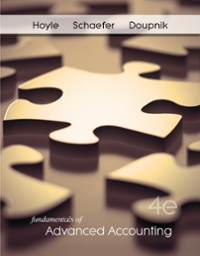Question
Dry Quick (DQ) is a medium-sized, private manufacturing company located near Timmins, Ontario. DQ has a June 30 year end. The chief financial officer (CFO)
Dry Quick (DQ) is a medium-sized, private manufacturing company located near Timmins, Ontario. DQ has a June 30 year end. The chief financial officer (CFO) felt that DQ has outgrown its previous audit firm and asked your firm, Poivre & Sel (P&S), to perform the annual audit.
It is now August 2, 2021. P&S has performed the necessary client acceptance procedures and is currently working on the year-end audit of DQ. However, the senior on the engagement has recently become ill and will be unable to complete the file. You, CPA, have been asked to take over the senior role on the audit. The following information has been provided to help you familiarize yourself with the client: information on DQ (Appendix I), a draft income statement prepared by management in accordance with accounting standards for private enterprises (ASPE) (Appendix II), notes from your firm's meetings with management and the board chair (Appendix III), and excerpts from the current-year audit file (Appendix IV).
The following week, the audit partner on the file calls you into his office and says, "Now that you've had the audit file for a week, can you let me know what financial reporting issues you have found? I want to know if there are any updates needed to our approach, any materiality considerations, and what audit procedures are outstanding. In addition, the board chair is wondering what our management letter is likely to contain. Based on your work, please outline what internal control improvements can be made and if there are any suggestions to the board for improving their oversight."
Appendix I Information on Dry Quick
DQ manufactures portable heating and drying units. The units include heat exchangers that heat and circulate dry air, making them useful on construction sites. The technology was invented by Yuda Field, the current chief executive officer (CEO). DQ holds a number of patents and is protective of its proprietary technology. Seed capital was generated from the sale of shares to Yuda's friends and family members, to employees, and through bank financing.
As the company grew, Yuda recognized the need for a CFO, particularly because he is more involved with research and development and manufacturing operations. It was difficult to recruit someone to come to Timmins, so Yuda decided to recruit someone with the right skill set, regardless of location. Two years ago, DQ hired Randy Wall, who works out of Toronto and spends about one week per month in Timmins. The bookkeeper, Melanie Beech, works in Timmins and reports to Randy. Even though Randy was hired as the CFO, he really enjoys sales and marketing. Randy has been instrumental in DQ's rapid sales growth because he is willing to travel extensively throughout North America to meet potential customers. With Randy involved in sales, Yuda says he considers himself more of a chief operating officer (COO) than a CEO. He completely trusts Randy, and defers most decisions, other than those related to manufacturing, to Randy.
A venture capital firm, VC Ventures (VC), obtained a 20% interest in DQ three years ago. Yuda owns 40% of the outstanding common shares of the company, while Randy holds 15%. The remaining shares are held by Yuda's friends and family members, and by DQ employees. Two directors of VC sit on DQ's board, along with Yuda, Randy, and one other member of DQ's management. The board also functions as the audit committee.
VC and DQ's management have been actively pursuing a buyer for the company. In the past year, DQ entered into negotiations with one company; however, the deal was not completed and is no longer being pursued. A second potential buyer has now been identified and has started some preliminary due diligence, and there has been significant interest from other potential parties. The current year's earnings are expected to be a key part of the determination of the purchase price.
Appendix II Draft income statement prepared by management

Step by Step Solution
There are 3 Steps involved in it
Step: 1

Get Instant Access to Expert-Tailored Solutions
See step-by-step solutions with expert insights and AI powered tools for academic success
Step: 2

Step: 3

Ace Your Homework with AI
Get the answers you need in no time with our AI-driven, step-by-step assistance
Get Started


